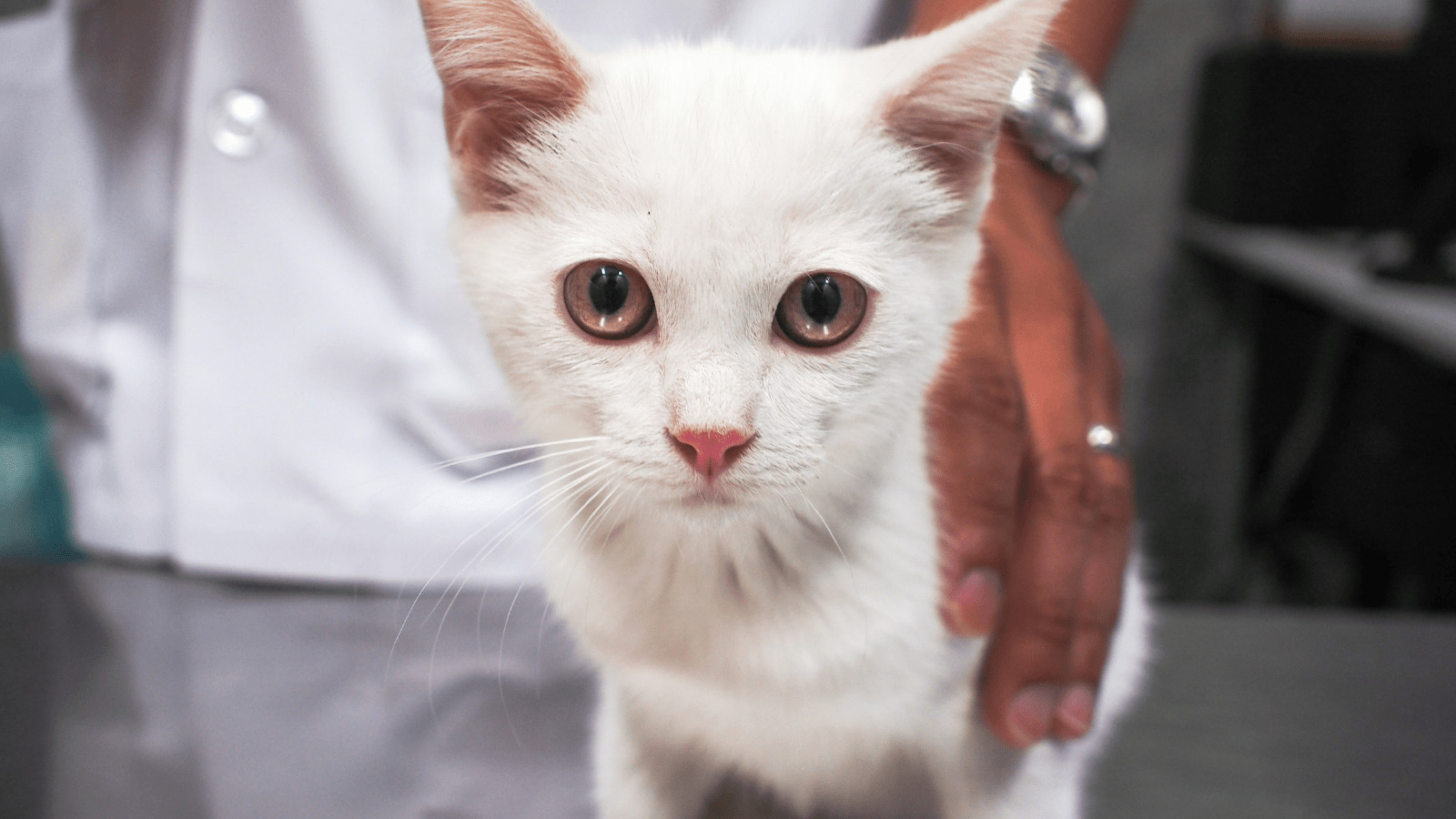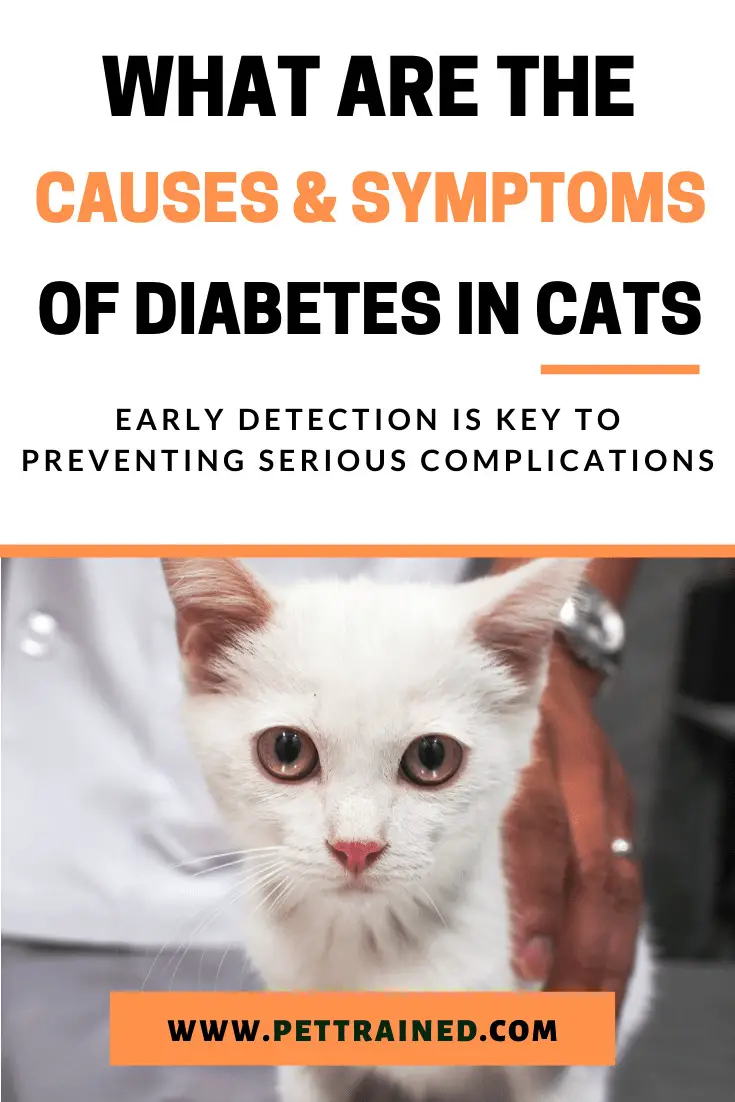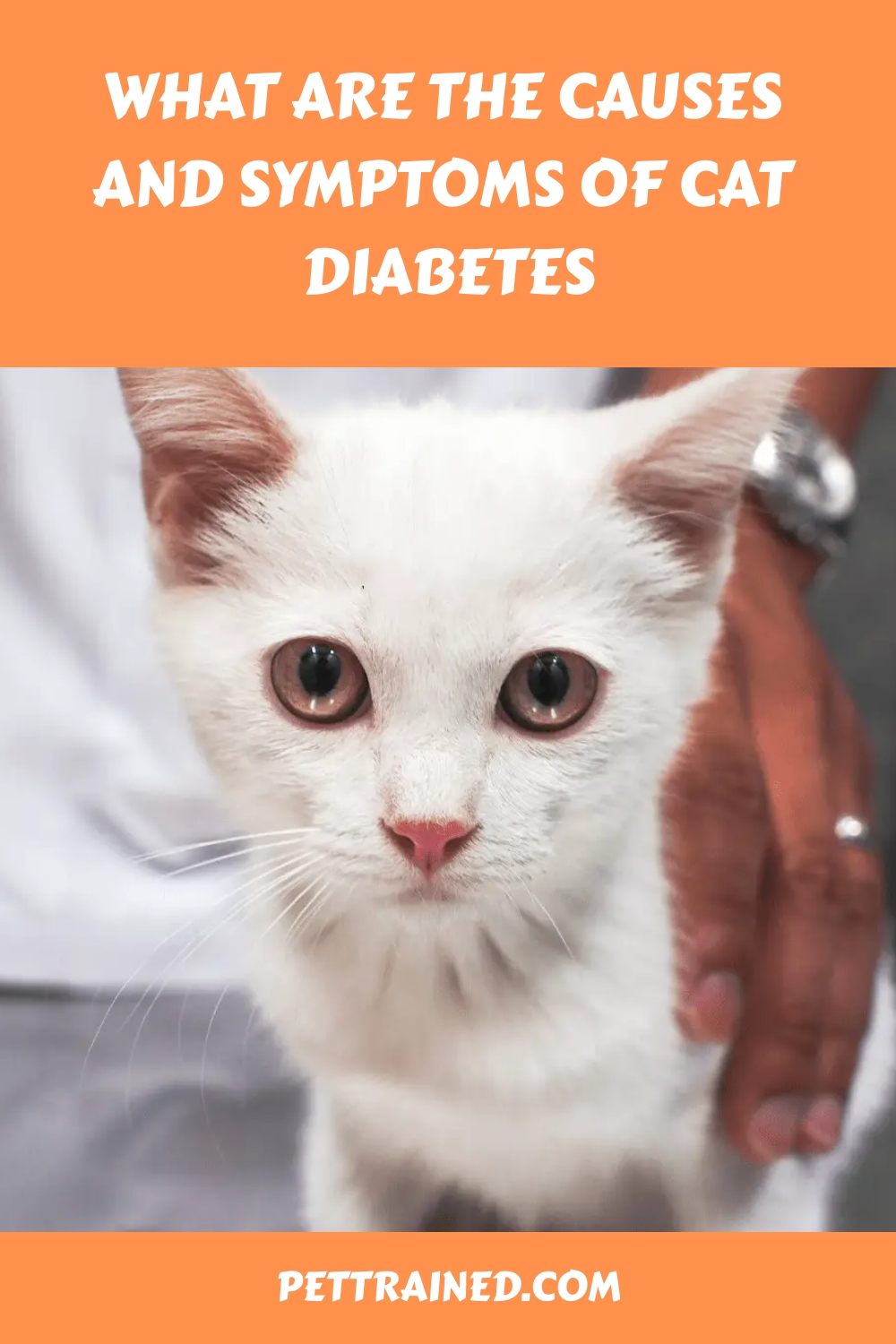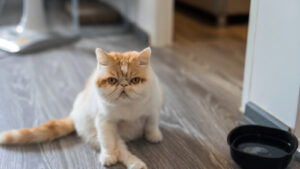Recently, there’s been a rise in the number of cats with diabetes. About 0.2% to 1% of cats globally suffer from diabetes and it is most common among obese cats. Do you think your cat has diabetes? Read on to be sure as I explain the causes of cat diabetes and symptoms of cat diabetes.

Table of Contents
Causes of Cat Diabetes
We do not know the actual cause of diabetes in cats. However, medics believe it is due to cat cells becoming resistant to insulin. Prednisolone and similar medications can cause it.
Also, your cat can become diabetic if it has hormonal disorders or chronic pancreatitis. Obese cats, male cats, and cats that consume a lot of carbohydrates are at high risk of getting diabetes. See this post on how to help your cat lose weight if you have an overweight cat. Being overweight can be a trigger for a variety of health problems so the sooner you can get your cat’s weight down the better.
Symptoms of Cat Diabetes
There are quite a few symptoms of diabetes. Some of them show up early when the condition is just starting and others show up later when the condition is fully developed.
Early Signs of Cat Diabetes
The early signs of diabetes in cats include:
Weight Loss
Diabetes makes it difficult for cat cells to absorb blood glucose hence starving the cells. The body then sources energy by burning body proteins and fats.
This can cause weight loss as there’ll be fewer body fats and proteins. Your cat can also develop more appetite for food and seem to be hungry all the time.
Also See:
Frequent Urination
Just like in humans, frequent urination is an early symptom of Type I and Type II diabetes in cats. As the cat cells can no longer absorb blood glucose, there’ll be high glucose concentration in the blood.
Therefore, more water is pulled into your cats’ urine to remove some of the glucose. This also means that much water is lost, dehydration occurs, and your cats’ thirst increases.
Later Signs Of Diabetes in Cats
As stated earlier, the later symptoms of cat diabetes manifest when the condition is likely critical. These signs show that the situation needs urgent attention. They later symptoms include;
Lack of appetite
A critical diabetic condition can lead to other conditions such as hypoglycemia, gastroparesis, and hyperglycemia. These could lead to a lack of appetite, vomiting, lethargy, and nausea in cats.
Lack of interest
Your cat having diabetes means it is sick and when a cat is sick, it is likely to lose interest in interaction or playing with you. Generally, most cat owners would notice a behavior change in their cats.
Movement Change
Sickness can make your cat feel weak and as a result, their movement pattern changes. Also, too much blood glucose means a high blood sugar level that could lead to neuropathy. This can result in permanent paralysis in cats.
Can Cat Diabetes Be Cured
Currently, there’s no cure for cat diabetes, you can only manage the condition. Your vet will advise you on the best way to go about this but usually, it involves two things – medication and a change in diet.
Medications
The common medication for diabetic cats is daily insulin. There are two options; injections, which are relatively expensive, and oral pills. See this post on how to give medication properly to a cat if you choose the pill route.
However, it is safer and more effective to give your cat insulin injections than giving them oral pills.
Pills promote insulin release by stimulating the pancreas. This process can also reduce glucose release but it’s risky. They could lead to liver damage if the pancreas is further damaged.
Diet
Diet change is vital to manage your cats’ diabetic condition. If done right, there might be no need for insulin injection or pills.
Your vet is in the best position to tell you what to feed a cat with diabetes. However, a low carbohydrate diet is ideal.
Low carb diets help with diabetes as they reduce blood sugar levels by minimizing the body’s dependence on insulin.
There are more carbs in dry cat foods, especially grains. You should avoid these and instead stick to a canned diet that consists more of fat and proteins. There are specific canned foods for diabetic cats you can get.
However, you can also go for specific healthy dry food for diabetic cats like the ones below which you may choose to purchase if wet food is not an affordable option for you.
Preventing Diabetes in Cats
Scientifically, there’s no actual way to prevent your cat from becoming diabetic. However, studies have shown that you have to watch your cats’ weight and ensure it doesn’t keep eating excessive carbohydrates as a means of preventing this condition.
Overall, just ensure your pet is in good health. Frequent trips to the vet for checkups are ideal and should be taken seriously by every pet owner. Sometimes, the diabetic condition can be genetic and there’s about nothing you can do to prevent it from happening to your cat.
Conclusion
If you notice any of the symptoms of cat diabetes such as weight loss, increase in appetite, or frequent urination, it is advisable that you quickly take your cat to a vet. The earlier the condition is detected and managed, the less of a health risk it poses to your pet.
From time to time, take your cat for a checkup to monitor her blood sugar level and also know how she is responding to treatment. Checkups are also essential to ensure that she does not develop other complications that diabetic cats may face if the condition is not managed properly.
As for now, there is no cure, however, we are hopeful to see a cure for diabetes in the future so our dear pets’ can be free from it. I hope you found our blog post on cat diabetes insightful and useful, please share it with all your friends who own pets.
















